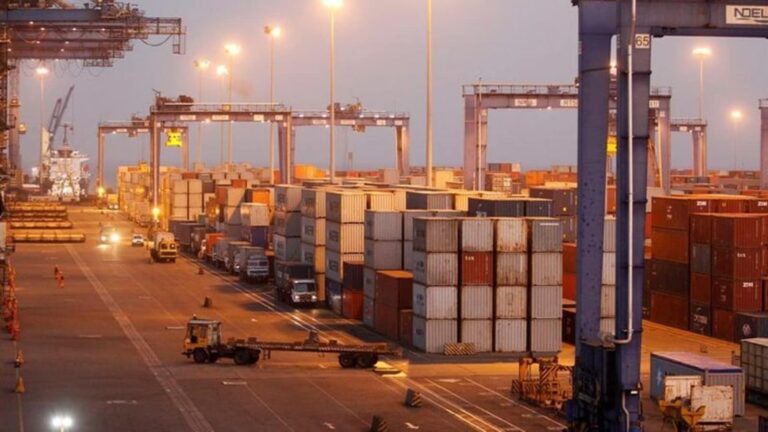[ad_1]
India and the four-nation European alliance EFTA on Sunday signed a free trade agreement in which New Delhi will receive investment commitments of $100 billion over the next 15 years to help create 1 million jobs.
The member countries of the European Free Trade Association (EFTA) are Iceland, Liechtenstein, Norway and Switzerland.
The agreement was signed after a gap of almost 16 years, as negotiations began in 2008 but were suspended in November 2013. Negotiations resumed in October 2016 and were concluded after 21 rounds of negotiations.
For the first time in the history of free trade agreements (FTAs), there is a legal commitment to promote goal-oriented investment and job creation.
Under the agreement, in addition to tariff concessions on processed agricultural products, EFTA member countries will be able to enjoy duty-free access to nearly all domestically manufactured products. Switzerland, India’s main trading partner in the region, has already eliminated tariffs on almost all industrial products since January this year.
India, on the other hand, provides 82.7 per cent of tariff lines or product categories and covers 95.3 per cent of EFTA exports, of which over 80 per cent of imports are gold.
Regarding gold, India did not mention the effective customs duty (15%), but reduced the bound tax rate by 1% to 39%.
Binding rates and applicable rates are used in international trade terminology. A binding duty or tariff refers to a ceiling, whereas the applicable tariff is the tariff currently in force.
India will also provide tariff concessions for certain PLI (Production-Linked Incentive) sectors such as pharmaceuticals, medical devices and processed foods.
The sensitivity associated with these sectors has been taken into account when extending the offer.
Sectors such as dairy products, soybeans, coal and sensitive agricultural products are on the exclusion list, meaning there will be no tariff concessions for these items.
According to the Ministry of Commerce, in the services sector, India contributes 105 sub-sectors to EFTA, including accounting, business services, computer services, distribution and healthcare.
Meanwhile, the country has secured commitments in 128 sub-sectors from Switzerland, 114 from Norway, 107 from Liechtenstein and 110 from Iceland.
Areas where India’s services will be strengthened include law, audiovisual, research and development, computers, accounting and auditing.
TEPA (Trade and Economic Partnership Agreement) will stimulate our service exports in our key areas of strength/interest, such as IT services, business services, personal, cultural, sports and recreational services, other educational services, and audiovisual services. Sho.
Further commitments related to intellectual property rights under TEPA are made at the TRIPS (Trade-Related Aspects of IPR) level.
The intellectual property badge with Switzerland, which has high intellectual property standards, demonstrates our strong intellectual property rights regime.
It added that India’s interest in generic medicines and concerns related to evergreening of patents have been adequately addressed.
He also said that the agreement will give Indian exporters access to specialized materials and create a favorable environment for trade and investment.
This will boost exports of Indian products and provide opportunities for the services sector to access more markets.
TEPA also provides opportunities for integration into the EU market. More than 40% of Switzerland’s global services exports go to the European Union (EU).
Indian companies can look to Switzerland as a base to expand their market into the EU.
It also fosters technology collaboration and access to world-leading technologies in precision engineering, health sciences, renewable energy, innovation, and research and development.
After signing the agreement, Commerce and Industry Minister Piyush Goyal described it as a “watershed moment” as it is India’s first modern trade agreement with a bloc that includes developed countries.
He said that for the first time in a trade agreement, EFTA committed to investing $100 billion over the next 15 years.
The agreement is expected to take about a year to enter into force.
The agreement consists of 14 chapters, including trade in goods, rules of origin, intellectual property rights (IPR), trade in services, investment promotion and cooperation, government procurement, technical barriers to trade, and trade facilitation.
Prime Minister Narendra Modi said the signing of India’s trade agreement with the European Quad Alliance EFTA is a “turning point” as it symbolizes a shared commitment to open, fair and equitable trade.
“EFTA countries have gained market access to key growth markets. Our companies are working to increase supply chain resilience while diversifying their supply chains. In return, India has gained market access to key growth markets. We will attract more foreign investment from EFTA,” said Federal Councilor Guy Parmelin on behalf of the Bundestag. This was announced by EFTA member countries.
India has previously had success using strategies to facilitate or speed up FTA negotiations with the UAE and Australia.
Two-way trade between India and EFTA stood at $18.65 billion in 2022-23, compared to $27.23 billion in 2021-22. The trade deficit in the previous fiscal year was $14.8 billion.
Ajay Srivastava, founder of economic think tank GTRI, said that a successful deal with developed countries like Switzerland would demonstrate India’s firm commitment to trade liberalization at a time when the rest of the world is becoming more protectionist. He said this would send a positive signal to the world.
Get business news, today’s gold rate, India news and other relevant updates on Hindustan Times website and app.
[ad_2]
Source link


